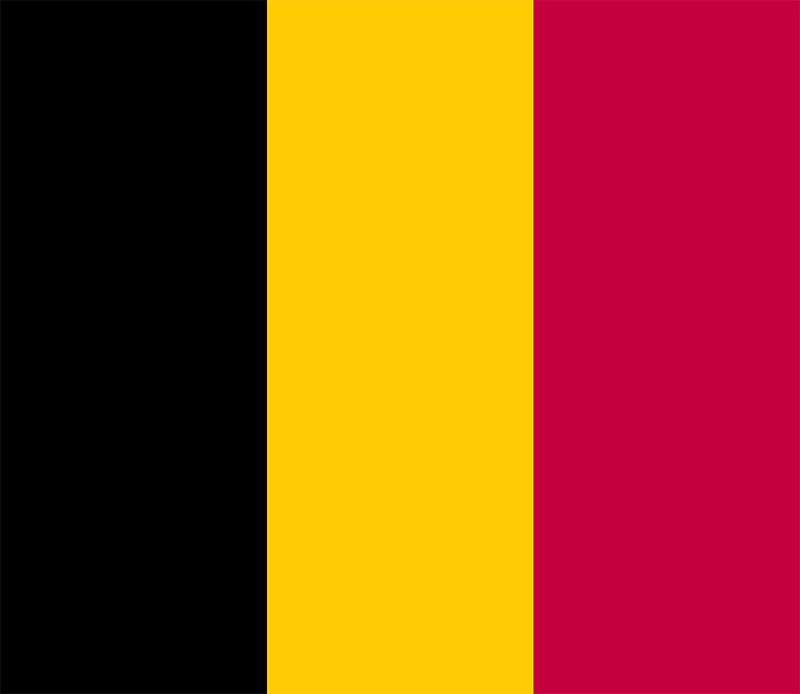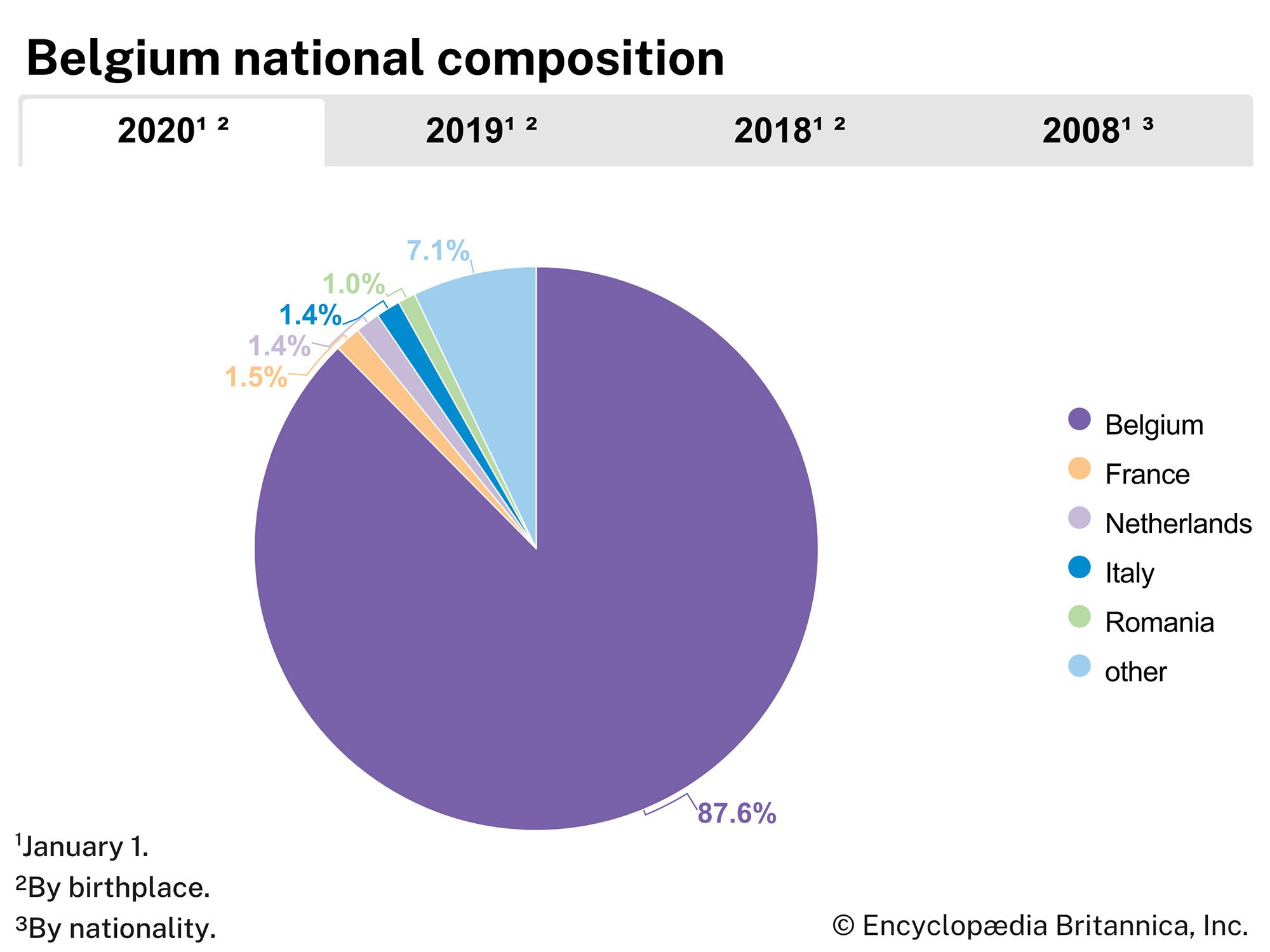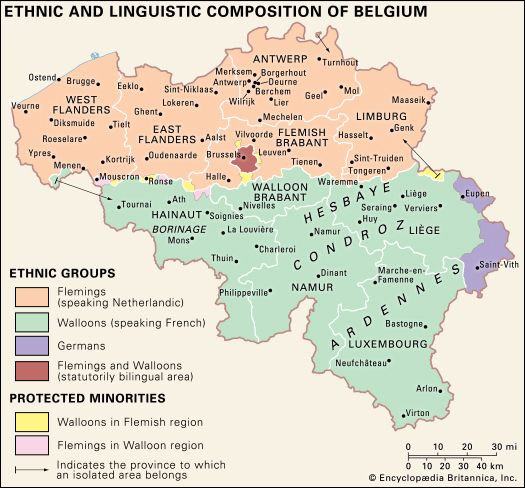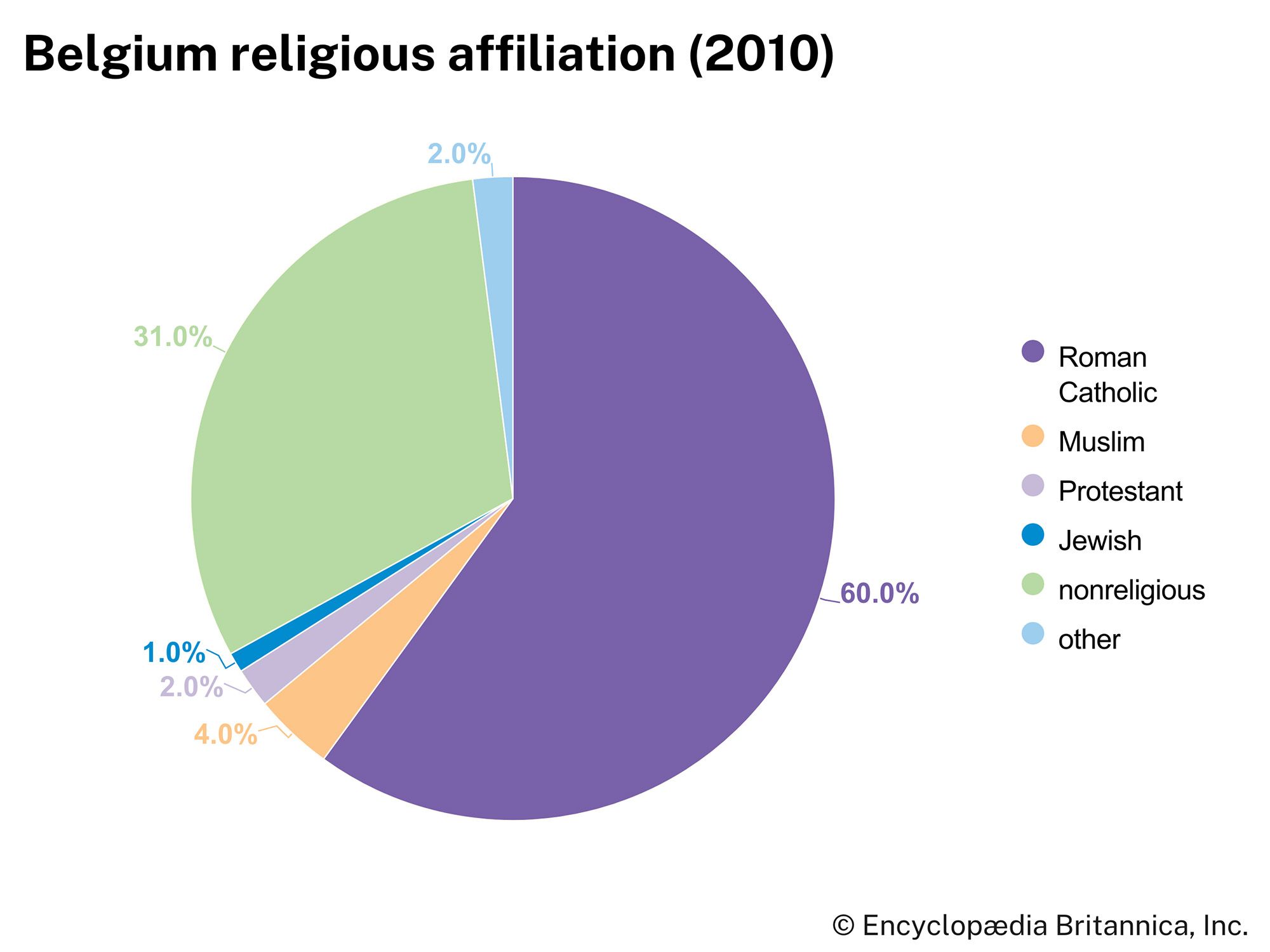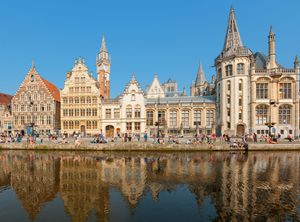Belgium
News •
Belgium, country of northwestern Europe. It is one of the smallest and most densely populated European countries, and it has been, since its independence in 1830, a representative democracy headed by a hereditary constitutional monarch. Initially, Belgium had a unitary form of government. In the 1980s and ’90s, however, steps were taken to turn Belgium into a federal state with powers shared among the regions of Flanders, Wallonia, and the Brussels-Capital Region.
Culturally, Belgium is a heterogeneous country straddling the border between the Romance and Germanic language families of western Europe. With the exception of a small German-speaking population in the eastern part of the country, Belgium is divided between a French-speaking people, collectively called Walloons (approximately one-third of the total population), who are concentrated in the five southern provinces (Hainaut, Namur, Liège, Walloon Brabant, and Luxembourg), and Flemings, a Flemish- (Dutch-) speaking people (more than one-half of the total population), who are concentrated in the five northern and northeastern provinces (West Flanders, East Flanders [West-Vlaanderen, Oost-Vlaanderen], Flemish Brabant, Antwerp, and Limburg). Just north of the boundary between Walloon Brabant (Brabant Walloon) and Flemish (Vlaams) Brabant lies the officially bilingual but majority French-speaking Brussels-Capital Region, with approximately one-tenth of the total population. (See also Fleming and Walloon.)
- Also Known As:
- Koninkrijk België
- Königreich Belgien
- Kingdom of Belgium
- Royaume de Belgique
- Head Of Government:
- Prime Minister: Alexander De Croo
- Capital:
- Brussels
- Population:
- (2024 est.) 11,870,000
- Currency Exchange Rate:
- 1 USD equals 0.937 euro
- Head Of State:
- King Philippe
- Form Of Government:
- federal constitutional monarchy with two legislative houses (Senate [601]; House of Representatives [150])
- Official Languages:
- Dutch; French; German
- Official Religion:
- none
- Official Name:
- Koninkrijk België (Dutch); Royaume de Belgique (French); Königreich Belgien (German) (Kingdom of Belgium)
- Total Area (Sq Km):
- 30,689
- Total Area (Sq Mi):
- 11,849
- Monetary Unit:
- euro (€)
- Population Rank:
- (2023) 83
- Population Projection 2030:
- 11,905,000
- Density: Persons Per Sq Mi:
- (2024) 1,001.8
- Density: Persons Per Km:
- (2024) 386.8
- Urban-Rural Population:
- Urban: (2024) 98.2%
- Rural: (2024) 1.8%
- Life Expectancy At Birth:
- Male: (2022) 79.5 years
- Female: (2022) 83.8 years
- Literacy: Percentage Of Population Age 15 And Over Literate:
- Male: 100%
- Female: 100%
- Gni (U.S.$ ’000,000):
- (2023) 644,688
- Gni Per Capita (U.S.$):
- (2023) 54,530
- In May 2014 membership decreased from 71 to 60; regional and community parliaments select 50 members; those members select the remaining 10.
Belgium and the political entities that preceded it have been rich with historical and cultural associations, from the Gothic grandeur of its medieval university and commercial cities and its small, castle-dominated towns on steep-bluffed winding rivers, through its broad traditions in painting and music that marked one of the high points of the northern Renaissance in the 16th century, to its contributions to the arts of the 20th century and its maintenance of the folk cultures of past eras. The Belgian landscape has been a major European battleground for centuries, notably in modern times during the Battle of Waterloo (1815) and the 20th century’s two world wars. Given its area and population, Belgium today is one of the most heavily industrialized and urbanized countries in Europe. It is a member of the Benelux Economic Union (with the Netherlands and Luxembourg), the European Union (EU), and the North Atlantic Treaty Organization (NATO)—organizations that all have headquarters in or near the capital city of Brussels.
Land
The country has a total of 860 miles (1,385 km) of land boundaries with neighbours; it is bounded by the Netherlands to the north, Germany to the east, Luxembourg to the southeast, and France to the south. Belgium also has some 40 miles (60 km) of shoreline on the North Sea.
Relief, drainage, and soils
Belgium generally is a low-lying country, with a broad coastal plain extending in a southeasterly direction from the North Sea and the Netherlands and rising gradually into the Ardennes hills and forests of the southeast, where a maximum elevation of 2,277 feet (694 metres) is reached at Botrange.

The main physical regions are the Ardennes and the Ardennes foothills; Côtes Lorraines (Belgian Lorraine), the intrusion of the Paris Basin in the south; and the Anglo-Belgian Basin in the north, comprising the Central Plateaus, the plain of Flanders, and the Kempenland (French: Campine).
The Ardennes region is part of the Hercynian orogenic belt of mountain ranges, which reaches from western Ireland into Germany and was formed roughly 300 to 400 million years ago, during the Paleozoic Era. The Ardennes is a plateau cut deeply by the Meuse River and its tributaries. Its higher points contain peat bogs and have poor drainage; these uplands are unsuitable as cropland.
A large depression, known east of the Meuse River as the Famenne and west of it as the Fagne, separates the Ardennes from the geologically and topographically complex foothills to the north. The principal feature of the area is the Condroz, a plateau more than 1,100 feet (335 metres) in elevation comprising a succession of valleys hollowed out of the limestone between sandstone crests. Its northern boundary is the Sambre-Meuse valley, which traverses Belgium from south-southwest to northeast.
Situated south of the Ardennes and cut off from the rest of the country, Côtes Lorraines is a series of hills with north-facing scarps. About half of it remains wooded; in the south lies a small region of iron ore deposits.
A region of sand and clay soils lying between 150 and 650 feet (45 and 200 metres) in elevation, the Central Plateaus cover northern Hainaut, Walloon Brabant, southern Flemish Brabant, and the Hesbaye plateau region of Liège. The area is dissected by the Dender, Senne, Dijle, and other rivers that enter the Schelde (Escaut) River; it is bounded to the east by the Herve Plateau. The Brussels region lies within the Central Plateaus.
Bordering the North Sea from France to the Schelde is the low-lying plain of Flanders, which has two main sections. Maritime Flanders, extending inland for about 5 to 10 miles (8 to 16 km), is a region of newly formed and reclaimed land (polders) protected by a line of dunes and dikes and having largely clay soils. Interior Flanders comprises most of East and West Flanders and has sand-silt or sand soils. At an elevation of about 80 to 300 feet (25 to 90 metres), it is drained by the Leie, Schelde, and Dender rivers flowing northeastward to the Schelde estuary. Several shipping canals interlace the landscape and connect the river systems. Lying between about 160 and 330 feet (50 and 100 metres) in elevation, the Kempenland contains pastureland and is the site of a number of industrial enterprises; it forms an irregular watershed of plateau and plain between the extensive Schelde and Meuse drainage systems.

